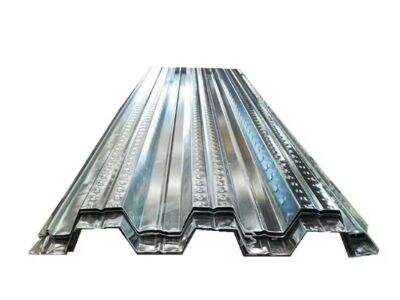Rostfritt stål är en speciell typ av metall som kan göras till många saker. Vi står fast vid premissen på Pulda Metal att det rostfria stålet spelar en betydande roll vid konstruktion av starka byggnader och verktyg som tål pumpen och ökar miljöförstöringen. Denna metall är unik genom att den inte rostar lätt och är ganska användbar i många applikationer på grund av den. Rostfritt stål finns i olika kvaliteter, och varje kvalitet har distinkta egenskaper som gör den lämplig för specifika applikationer.
Kategorier och egenskaper i rostfritt stål
Rostfritt stål, som namnet antyder, är tillverkat av flera metaller - järn, nickel och krom. Olika proportioner av metaller i blandningen ändrar ståltypen och dess kapacitet. De tre huvudtyperna av rostfritt stålrör är: austenitiska, ferritiska och martensitiska.
Austenitiskt rostfritt stål är den typ av rostfritt stål som du oftast kommer att stöta på. Denna kategori är en av de bästa utmanarna mot rost och fläckar. Den har en mycket hög nickel- och kromhalt, de två metallerna som håller den säker från korrosion. Dessa egenskaper gör austenitiskt rostfritt stål till en stöttepelare i köksmaskiner, byggmaterial - och i vissa fall medicinska instrument. Denna typ av rostfritt stål finns på platser som restauranger och sjukhus, där hygien och hållbarhet är av största vikt.
En annan form av rostfritt stål, så kallat ferritiskt rostfritt stål, har mer krom än austenitiskt rostfritt stål. Den här är en billigare typ, vilket gör den lämplig för många applikationer. Ferritiskt rostfritt stål är också magnetiskt och kan attraheras av magneter. På grund av dessa egenskaper används det ofta i fordon - särskilt för komponenter som avgassystem som måste vara både hållbara och värmebeständiga.
Den hårdaste scg eller typen av rostfritt stål är Martensitic rostfritt stål. Det som är känt för att vara starkt och hållbart vilket gör det utmärkt för verktyg som behöver förbli vassa. Du hittar ofta martensitiskt rostfritt stål i skärverktyg, knivar och annat som behöver en stark egg. Denna typ av rostfritt stål spelar en nyckelroll i både kök och storkök.
Hur rostfritt stål används
Eftersom rostfritt stål är mycket mångsidigt kan det användas inom många olika sektorer. Det används i konstruktion för att göra robusta strukturer, i livsmedels- och dryckesproduktion för att göra allt säkert att äta och i den medicinska industrin för verktyg och utrustning som måste vara extremt rena och säkra. Rostfritt stål finns också i transporter, som delar till flygplan och bilar, där styrka och motståndskraft mot rost är avgörande.
En av de främsta anledningarna till varför rostfri stålplåt är så användbart eftersom det inte rostar. Denna egenskap gör den idealisk för utomhusapplikationer och i strukturer som är utsatta för väder och vind. Även om detta betyder att det är starkt och hållbart, kan rostfritt stål hålla länge även när det utsätts för regn, snö eller till och med salt luft från havet.
Hur man väljer rätt rostfritt stål
Om du väljer rostfritt stål för en viss applikation är användningsplatsen och användningssättet extremt viktigt att ta hänsyn till. Om metallen kommer att vara nära saltvatten eller i en miljö som kan leda till rost, kan till exempel rostfritt stål från den austenitiska eller duplexfamiljen vara det bästa alternativet. De är mycket korrosionsbeständiga typer.
Martensitiskt rostfritt stål kan vara det rätta valet för byggprojekt om du behöver något som sticker mycket starkt. Du är bara stark nog att ta denna stryk. Detta är viktiga begrepp att känna till så att du förstår vad olika rostfria stål kan göra och hur de kommer att fungera i olika miljöer. Om du gör rätt val kan du vara säker på att det rostfria stålet kommer att tjäna sitt syfte och även hålla.
Vad är korrosionsbeständighet?
Korrosion är en naturlig process som uppstår när metaller utsätts för atmosfäriska förhållanden. Det kan fräta på materialen och de blir spröda med tiden. Dess rostfria är klorid, vilket är det som ger den egenskaper som mobiliserar den mot rost. Rostfritt stål, när det interagerar med syret i luften, har en reaktion som gör att det utvecklar ett skyddande kromlager på utsidan. Skiktet är känt som en kromoxidfilm, och det skyddar metallen från rost och korrosion.
Procentandelen krom i rör av rostfritt stål är verkligen viktigt, eftersom ju mer krom i stålet, desto mer motståndskraftig mot korrosion blir stålet. Mer krom i rostfritt stål innebär också bättre motståndskraft mot tuffa miljöer, eftersom detta material kan bestå längre i situationer med hög fuktighet och hög salthalt.
Nya användningsområden och framsteg
Rostfritt stål används och omformas alltmer av ny teknik och kraven från många industrier. Till exempel, inom olje- och gasindustrin, kräver vi ännu mindre rostfritt rostfritt stål eftersom apparaterna måste fungera grovt. Det är själva anledningen till att vi strävar efter att uppgradera såväl kvalitet som styrka i rostfritt stål.
Som sådana har vi sett framsteg inom den rostfria stålindustrin som förhoppningsvis innebär framsteg inom det medicinska området med kirurgiska verktyg och nya implantat. Och dessa nya verktyg är inte bara starkare utan också lättare, vilket gör dem lättare att använda. Detta är mycket goda nyheter för läkare och patienter.
Vi lär oss alltid om det senaste inom rostfritt stål på Pulda Metal. Vi levererar ett komplett utbud av tillbehör och tjänster tillverkade av rostfritt stål till våra kunder. Vi arbetar med allt från byggmaterial till komplexa medicinska apparater som tjänar våra uppdragsgivares syfte.
Således är rostfritt stål en betydande metall med exklusiva egenskaper som gör det riktigt bekvämt genom olika industrier. Att lära sig om de olika typerna av rostfritt stål och vad de kan göra hjälper till att välja rätt metall för jobbet. När ny teknik för rostfritt stål fortsätter att utvecklas ser vi fram emot hur denna viktiga metall kommer att användas i framtiden.

